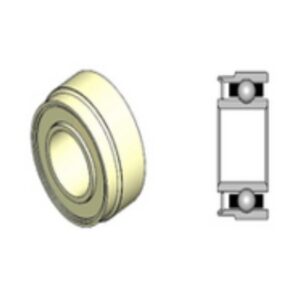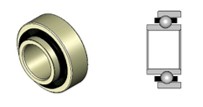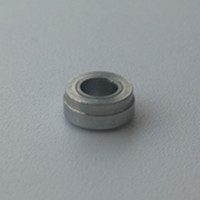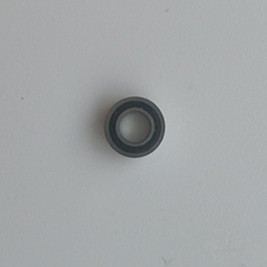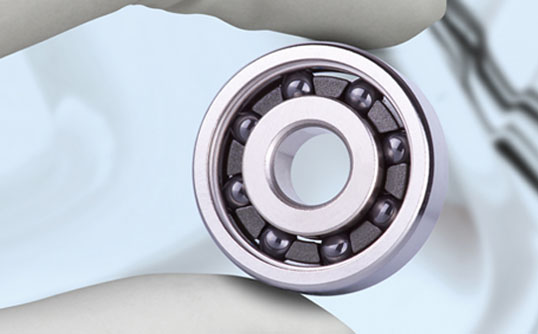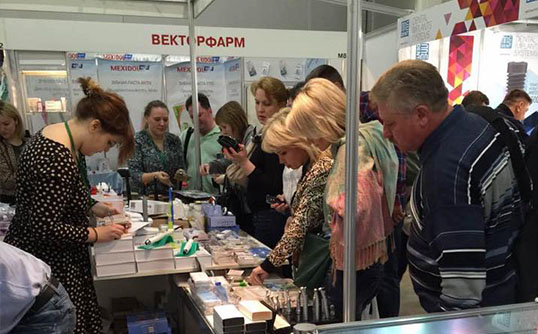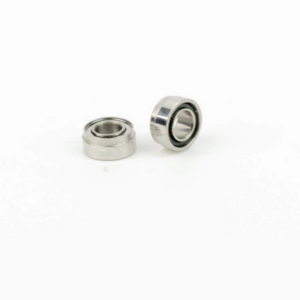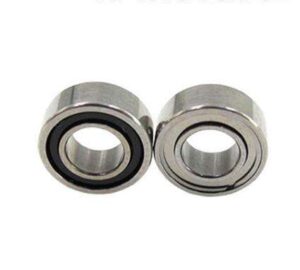Revitalize Your Practice: Mastering Kavo Dental Handpiece Repair with Precision Bearings
This article is your ultimate guide to understanding and mastering Kavo dental handpiece repair, focusing on the crucial role of bearings. As a leading manufacturer of dental bearings, including high-speed dental bearings and low-speed dental bearings, we’re dedicated to providing top-tier products and insights. This comprehensive guide will delve into the intricacies of Kavo handpieces, exploring topics such as turbine replacement, bearing types, and maintenance best practices. Whether you’re a dental hospital, oral hospital, or dental tool repair specialist, this resource offers invaluable knowledge to enhance your services and ensure optimal handpiece performance. It’s worth reading because it combines our expertise in dental bearing manufacturing with practical repair advice, helping you deliver superior patient care and maintain your equipment at peak efficiency.
Why is Kavo the Preferred Choice for Dental Handpieces?
Kavo has established itself as a leading brand in the dental industry, renowned for its high-quality handpieces that deliver exceptional performance and durability. Dental professionals worldwide trust Kavo for its commitment to innovation, precision engineering, and ergonomic design. Kavo handpieces are designed to provide optimal comfort for both the dentist and the patient, reducing fatigue during prolonged procedures.
Furthermore, Kavo offers a wide range of handpiece models to suit various dental procedures, from high-speed drilling to slowspeed polishing and surgical applications. Their handpieces are known for their smooth operation, minimal vibration, and precise control, allowing for accurate and efficient treatments. As a dental bearing manufacturer, we recognize the superior quality of Kavo products. We produce bearings that are compatible with various Kavo models, ensuring seamless integration and optimal performance. Our bearings maintain the high standards that Kavo users expect. If you want to learn more about compatible bearings, visit our bearings page.
Bearings are a fundamental component of Kavo handpieces, directly impacting their performance, longevity, and overall efficiency. These small but mighty components enable the smooth and precise rotation of the turbine, which in turn drives the bur at high speeds. High-quality bearings minimize friction, reduce noise and vibration, and ensure consistent power output.
In Kavo handpieces, bearings are subjected to extreme speeds, high temperatures, and sterilization processes. Therefore, they must be engineered to withstand these demanding conditions while maintaining their precision and durability. As experts in dental bearing manufacturing, we understand the critical role that bearings play in handpiece performance. Our dental bearings are meticulously crafted using advanced materials and manufacturing techniques to meet the specific requirements of Kavo handpieces. We offer both ceramic and steel bearings, each with its own unique advantages. To explore our range of high-speed dental bearings, we invite you to visit our dedicated high-speed dental bearings page.
How to Identify When Your Kavo Handpiece Needs Repair?
Recognizing the signs that your Kavo handpiece needs repair is crucial for maintaining optimal performance and preventing further damage. Here are some common indicators:
- Reduced Power or Speed: If your handpiece feels sluggish or lacks power, it could indicate worn-out bearings or a failing turbine.
- Unusual Noises: Grinding, squealing, or rattling sounds are often signs of bearing wear or damage.
- Excessive Vibration: Increased vibration can indicate imbalanced or worn bearings, affecting precision and patient comfort.
- Overheating: If your handpiece becomes unusually hot during use, it could be due to failing bearings or insufficient lubrication.
- Bur Wobble: If the bur wobbles or doesn’t spin concentrically, it suggests problems with the bearings or chuck mechanism.
- Intermittent Operation: If the handpiece starts and stops intermittently, it might indicate a problem with the turbine or air supply.
As soon as you notice any of these signs, you must address them promptly. Continuing to use a malfunctioning handpiece can compromise patient safety, reduce treatment effectiveness, and potentially cause further damage to the handpiece itself.
Kavo Turbine Replacement: A Step-by-Step Guide
Turbine replacement is a common repair procedure for Kavo handpieces. The turbine is the heart of the handpiece, housing the bearings and generating the rotational force. Over time, the turbine can wear out, requiring replacement to restore optimal performance. Here’s a general overview of the process:
- Disassembly: Carefully disassemble the handpiece head to access the turbine. This typically involves removing the back cap and any retaining rings. Using specialized tools is crucial. We recommend reviewing our selection of tools and testing equipment.
- Turbine Removal: Gently remove the old turbine from the handpiece head. Be careful not to damage any surrounding components.
- Inspection: Inspect the handpiece head for any signs of wear or damage. Clean the head thoroughly using a recommended cleaner.
- Bearing Check: If you’re replacing the turbine, it’s also a good time to inspect and, if necessary, replace the bearings.
- New Turbine Installation: Carefully insert the new turbine into the handpiece head, ensuring proper alignment and seating.
- Reassembly: Reassemble the handpiece head, following the reverse order of disassembly.
- Testing: Test the handpiece to ensure it’s operating smoothly and efficiently.
It’s important to note that this is a simplified overview. The specific steps may vary depending on the Kavo handpiece model. Always refer to the manufacturer’s instructions or seek professional repair services if you’re unsure about any part of the process.
Choosing the Right Bearings for Your Kavo Handpiece
Selecting the correct bearings for your Kavo handpiece is essential for optimal performance and longevity. Several factors come into play when making this decision:
- Handpiece Model: Different Kavo handpiece models require specific bearing sizes and types. Always verify the bearing specifications for your particular model. Our Kavo page offers a list of models and compatible bearings. Find yours on our Kavo brand page.
- Bearing Type: Kavo handpieces typically use either ceramic or steel bearings. Each type has its own advantages and disadvantages, which we’ll discuss in the next section.
- Quality: Choose high-quality bearings from reputable manufacturers. Inferior bearings can compromise performance and shorten the lifespan of your handpiece.
Table: Bearing Types and Their Characteristics
| Bearing Type | Material | Advantages | Disadvantages |
|---|
| Ceramic | Ceramic balls, | Lighter weight, higher speed capability, lower friction, corrosion-resistant, longer lifespan in some cases | Higher initial cost |
| Steel | Steel balls | Lower initial cost, durable, readily available | Heavier, potentially shorter lifespan under high stress, susceptible to corrosion |
As a leading manufacturer of dental bearings, we offer a wide selection of high-quality ceramic and steel bearings specifically designed for Kavo handpieces.
Ceramic vs. Steel Bearings: Which is Better for Kavo Handpieces?
The choice between ceramic and steel bearings for Kavo handpieces often comes down to specific needs and preferences. Let’s break down the key differences:
- Ceramic Bearings:
- Advantages: Ceramic bearings are known for their lightweight, high-speed capabilities, and excellent corrosion resistance. They generate less heat due to lower friction, which can contribute to a longer lifespan in some applications. They are often preferred for high-speed handpieces where performance and durability are paramount.
- Disadvantages: The primary drawback of ceramic bearings is their higher initial cost compared to steel bearings.
- Steel Bearings:
- Advantages: Steel bearings are generally more affordable than ceramic bearings and offer good durability. They are a reliable choice for various dental handpiece applications.
- Disadvantages: Steel bearings are heavier than ceramic bearings and may have a shorter lifespan under high-stress conditions. They are also more susceptible to corrosion if not properly maintained.
Ultimately, the best choice depends on your specific requirements and budget.
Maintaining Your Kavo Handpiece: Tips and Tricks
Proper maintenance is crucial for extending the life of your Kavo handpiece and ensuring optimal performance. Here are some essential tips:
- Cleaning: Clean your handpiece after each patient use, following the manufacturer’s instructions. Use a recommended cleaner and avoid harsh chemicals that can damage the handpiece components.
- Lubrication: Lubricate your handpiece regularly using a high-quality dental handpiece lubricant. Proper lubrication reduces friction, minimizes wear on the bearings, and ensures smooth operation.
- Sterilization: Follow the manufacturer’s guidelines for sterilizing your handpiece. Proper sterilization is essential for infection control.
- Regular Inspections: Periodically inspect your handpiece for any signs of wear or damage. Pay close attention to the bearings, turbine, and chuck mechanism.
- Professional Servicing: Have your handpiece professionally serviced at recommended intervals. A qualified technician can identify and address any potential issues before they escalate into major problems.
Table: Maintenance Schedule
| Task | Frequency |
|---|
| Cleaning | After each patient use |
| Lubrication | Daily, or as recommended by the manufacturer |
| Sterilization | After each patient use, following manufacturer’s guidelines |
| Inspection | Weekly, or more frequently if you notice any issues |
| Professional Servicing | Every 6-12 months, or as recommended by the manufacturer or based on usage. For high-volume practices, consider more frequent servicing. |
By adhering to a regular maintenance schedule, you can significantly extend the life of your Kavo handpiece, minimize downtime, and ensure consistent performance. For a comprehensive list of maintenance supplies, including lubricants and cleaners, look at our other tooling page.
Exploring Different Kavo Handpiece Models: Mini, Torque, and More
Kavo offers a diverse range of handpiece models, each designed for specific applications and user preferences. Let’s explore some popular options:
- Kavo Mini Handpieces: These compact handpieces are ideal for procedures requiring enhanced visibility and access, such as pediatric dentistry or working in confined spaces. Their smaller head size allows for greater precision and maneuverability.
- Kavo Torque Handpieces: Torque handpieces are designed for procedures that demand higher power and torque, such as crown preparations. They provide the necessary force for efficient cutting while maintaining control.
- Kavo Electric Handpieces: Electric handpieces offer consistent speed and torque, regardless of the load. They are known for their quiet operation and reduced vibration, enhancing patient comfort. Kavo electric handpieces provide exceptional control and precision for various procedures.
Each of these models comes with specific bearing requirements. For example, mini handpieces often utilize smaller, specialized bearings to accommodate their compact design. Torque handpieces may require bearings with higher load capacities to handle the increased forces.
Beyond bearing and turbine replacement, understanding the intricacies of push-button and chuck mechanisms is essential for comprehensive Kavo handpiece repair.
- Push Button Mechanism: Many Kavo handpieces feature a push-button chuck system for quick and easy bur changes. This mechanism relies on a series of springs, pins, and a push-button actuator. Over time, these components can wear out, leading to issues with bur retention or difficulty in releasing the bur. Repairing a push-button mechanism often involves disassembling the chuck, cleaning and inspecting the components, and replacing any worn-out parts.
- Lever Chuck: Some older models use a lever system to lock the bur in place.
Proper maintenance and timely repair of these mechanisms are vital for ensuring secure bur retention, preventing slippage during procedures, and maintaining overall handpiece functionality.
The Importance of Professional Dental Handpiece Repair Services
While some maintenance tasks can be performed in-house, professional dental handpiece repair services play a crucial role in ensuring the longevity and optimal performance of your Kavo handpieces. Here’s why:
- Expertise: Professional technicians have the specialized knowledge, tools, and experience to diagnose and repair complex handpiece issues accurately.
- Genuine Parts: Reputable repair services use genuine Kavo replacement parts, including high-quality bearings, ensuring compatibility and performance.
- Warranty: Many professional repair services offer warranties on their work, providing peace of mind and protection against premature failures.
- Advanced Equipment: Repair facilities often have access to advanced diagnostic and repair equipment that may not be available in a typical dental office.
- Time Savings: Outsourcing handpiece repair can save valuable time for your dental staff, allowing them to focus on patient care.
By partnering with a trusted dental handpiece repair service, you can ensure that your Kavo handpieces receive the highest level of care, maximizing their lifespan and performance.
FAQs
- How often should I replace the bearings in my Kavo handpiece? Bearing replacement frequency depends on usage, maintenance, and the type of bearings used. Generally, bearings may need replacement every 6-12 months, but it’s best to follow the manufacturer’s recommendations or consult a professional technician.
- Can I use generic bearings in my Kavo handpiece? While it might be tempting to use cheaper, generic bearings, it’s strongly recommended to use genuine Kavo replacement bearings or those specifically designed for Kavo handpieces. Generic bearings may not meet the required specifications, leading to premature failure, reduced performance, and potential damage to the handpiece. We offer a range of bearings that are compatible with Kavo models. Explore your options on our Kavo brand page.
- What is the difference between a turbine and a cartridge? In the context of dental handpieces, the terms “turbine” and “cartridge” are often used interchangeably. Both refer to the core assembly that houses the bearings, impeller, and other components responsible for generating rotational force.
- How do I know if my Kavo handpiece needs lubrication? Most Kavo handpieces require daily lubrication. If you notice any unusual noises, reduced power, or increased vibration, it’s a good indication that your handpiece needs lubrication. Always follow the manufacturer’s instructions for lubrication procedures.
- Can I sterilize my Kavo handpiece in an autoclave? Yes, most Kavo handpieces are designed to be sterilized in an autoclave. However, it’s crucial to follow the manufacturer’s specific instructions regarding sterilization parameters, such as temperature and duration.
- What causes a Kavo handpiece to overheat? Overheating can be caused by several factors, including worn-out bearings, insufficient lubrication, a blocked air line, or a failing turbine. If your handpiece overheats, discontinue use and have it inspected by a professional.
Key Takeaways
- Kavo handpieces are renowned for their quality, performance, and durability in the dental industry.
- Bearings play a critical role in Kavo handpiece performance, influencing speed, precision, and longevity.
- Regular maintenance, including cleaning, lubrication, and sterilization, is essential for extending the life of your Kavo handpiece.
- Turbine replacement is a common repair procedure that can restore optimal handpiece performance.
- Choosing the right bearings, whether ceramic or steel, depends on your specific needs and handpiece model.
- Professional dental handpiece repair services offer expertise, genuine parts, and warranties, ensuring the best possible care for your Kavo handpieces.
- Understanding the signs of handpiece wear and tear allows for timely intervention and prevents further damage.
- Different Kavo handpiece models, such as mini, torque, and electric, cater to various dental procedures and preferences.
- Advanced repair techniques for push-button and chuck mechanisms are essential for comprehensive handpiece maintenance.
- Partnering with a reputable repair service can save time, ensure quality, and maximize the lifespan of your Kavo handpieces.
- As a manufacturer of dental bearings, we are committed to providing high-quality products that enhance the performance and longevity of dental handpieces. We understand the importance of precision and reliability in the dental field.
By implementing these insights and partnering with trusted suppliers and repair services, you can ensure that your Kavo handpieces continue to deliver exceptional performance, contributing to the success of your dental practice.
